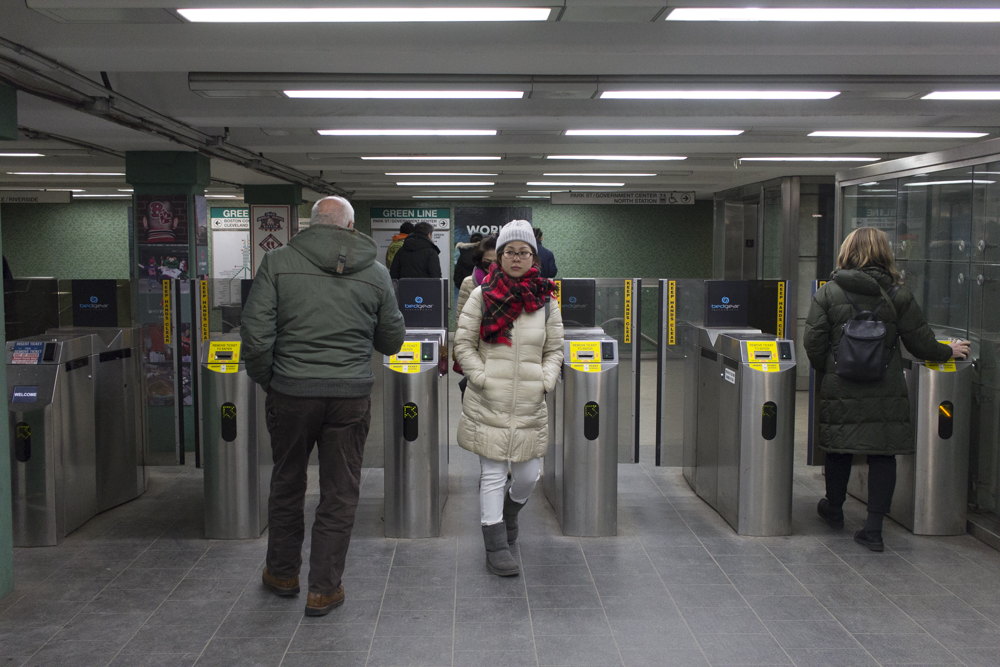
The Massachusetts Bay Transportation Authority has reached a multi-year agreement on their Automated Fare Collection system. The new cashless system is designed to increase speed along the green line through convenient payment options, all-door boarding, tap-on payment for all vehicles and increased accessibility.
The commercial and financial contract with Cubic Transportation Systems and John Laing Group started in November. Tuesday’s close was $22 million under what the Fiscal and Management Control Board had approved in November for this contract.
The first elements of the new system will be implemented in late 2019. During the transition period, the existing CharlieCard will be accepted along with new payments until mid-2020, according to a press release from the Massachusetts Department of Transportation.
The system will allow for smartphone and contactless credit card use, according to the release. Customers can continue using cash to reload cards at all vending machines and local retailers.
MBTA General Manager Luis Manuel Ramírez said in the release that the new fare collection system is “an entirely new way” that customers will be able to interact with the MBTA.
Some concern has been expressed over AFC 2.0 because of how it could affect some vulnerable groups in Massachusetts. Stacy Thompson, executive director of the LivableStreets Alliance, said this new system could be problematic for those in poverty, the elderly and immigrants, specifically.
“If the overall goal is for the T to run more efficiently and to serve more people equitably, then I think that the T has taken some really positive first steps,” Thompson told The Daily Free Press. “But, they are going to have to do a lot more between now and the implementation to ensure that will achieve those goals.”
An Allston resident also expressed concern about how this change could affect certain Bostonians.
“I worry about elderly citizens and the disabled, especially, because for a lot of them, senior citizens especially, the technology is beyond them somewhat,” Barbara Beck, 62, said. “A lot of them don’t even have cell phones, or if they do, they aren’t smartphones … I know they want to make things smoother, but definitely take the seniors into consideration.”
If the locations of vending machines are clear and accessible 24 hours a day, Thompson said the MBTA would not be serving all their riders and would not succeed in achieving this goal. Doubling the number of places one can buy a T pass is a great first step, she said.
“I think it’s a bigger question of policy and who has to pay and if people are paying ride-by-ride and paying in pennies and with change, then we need to access the root causes of why they are paying that way and then address those with better low-income options for people,” Thompson said. “I would really love to see a robust process that answers these questions and updates the overall fare policy before this gets implemented.”
Thompson said she is worried over how the implementation of the new system will actually play out — situations that could arise with this new system include T police going onto buses to look at people’s passes as well as people getting penalized for not being able to pass for such a pass at all.
“We have a lot of questions and concerns about exactly how this system will be enforced and how they will accommodate people who aren’t paying for reasons out of their control,” she said.
Aaron Glickman, 41, of Allston, said he does not think this change would be beneficial for most riders.
“The long and the short of it is this: Most of the people who use public transportation are people from lower income or immigrants or whatever so most of these improvements are probably for people who maybe use public transportation or probably drive,” Glickman said. “I know they want to make it faster but are they really helping the people who use the public transportation? It is probably just going to be a hassle for them.”





Just for the record, these are called fare gates rather than turnstiles. The old turnstiles turned.